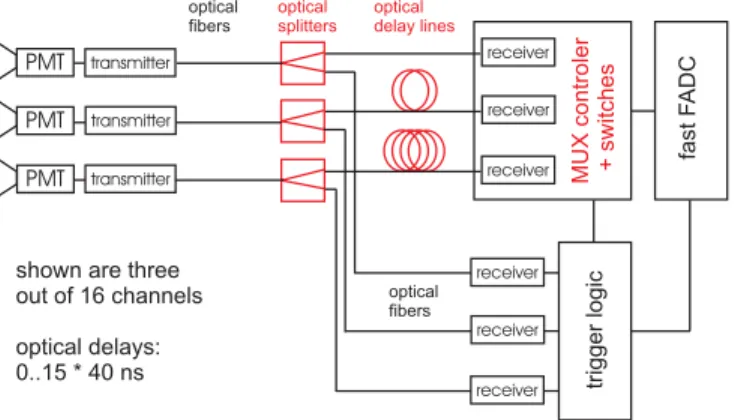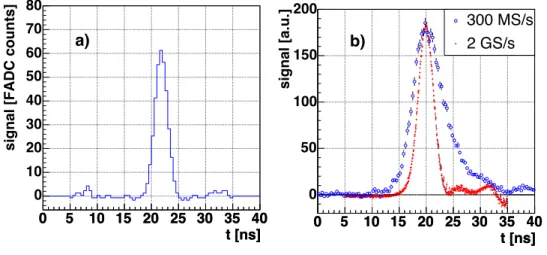Tests of a Prototype Multiplexed Fiber-Optic Ultra-fast FADC Data Acquisition System for the MAGIC Telescope
Volltext
Abbildung


ÄHNLICHE DOKUMENTE
The analog signals are transmitted via optical fibers to the electronics hut where they are stretched, split into high and low gain channels and digitized with 300 MHz 8 bit Flash
We have developed a set of tools that, apart from sky images (count maps), compute the instrument response functions (IRFs) of MAGIC (effective exposure throughout the FoV, point
The MAGIC (Major Atmospheric Gamma Imaging Cherenkov) Telescope was designed in 1998 [1] with the main goal of being the Imaging Atmospheric Cherenkov Telescope (IACT) with the
The chosen unidentified EGRET sources are compatible with the pulsar hypothesis. All of them should comply with the following criteria: 1) to be observable from La Palma, with lat
The calibration system of the MAGIC telescope consists of intensity controlled fast LED light pulsers of different colors and intensities that illuminate the MAGIC camera
where T parameterizes the combination of intrinsic arrival time spread of the photons from the light pulser and the transit time spread of the PMT, T parameterizes the
Bartko et al., Search for Gamma Rays from the Galactic Center with the MAGIC telescope in proceedings of 29th International Cosmic Ray Conference (2005) [astro-ph/0508244].
The event-based analysis package MARS (MAGIC Analysis and Reconstruction Software) offers a suitable framework for such a challenging analysis task.. The modular concept provides